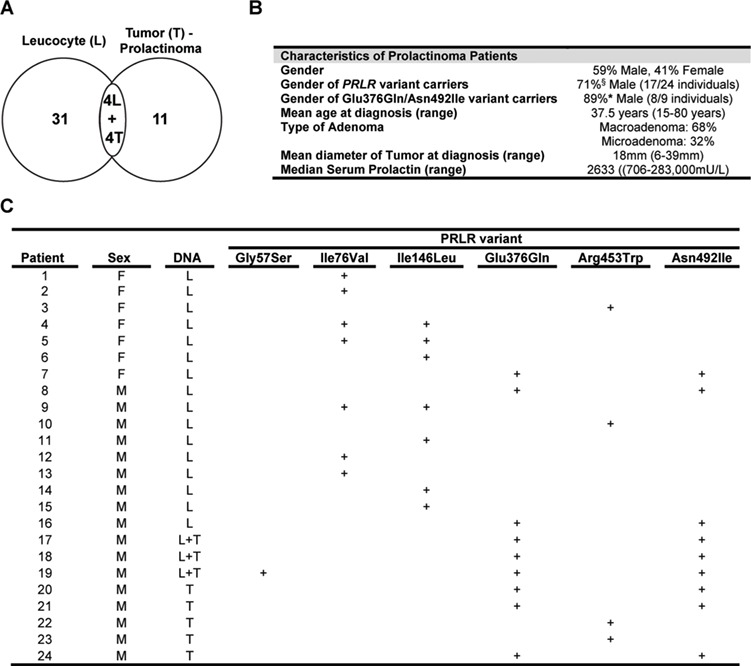Figure 1.

Clinical features of patients with prolactinomas. (A) Distribution of 50 DNA samples (35 leucocytes (L) and 15 tumors (T)) from 46 patients with prolactinomas. Matched leucocyte and tumor (L + T) samples were obtained from four unrelated patients. (B) Clinical details of the prolactinoma cohort. No patients had MEN1. Four patients had a history of familial prolactinoma, with two patients being the father and daughter from one family, both of whom had none of the rare (<1%) or low-frequency (<5%) PRLR variants, and the other two patients being first cousins from another family, both of whom had the low-frequency PRLR variant Ile76Val. All patients had hyperprolactinemia (prolactin normal ranges: 45–375 mU/L (2.1–17.7 ng/mL) for males and 60–625 mU/L (2.8–29.5 ng/mL) for females; for conversion to ng/mL, divide by 21.2). (C) Details of patients with prolactinomas in whom rare or low-frequency PRLR variants were identified. The rare PRLR variants are Gly57Ser, Glu376Gln, Arg453Trp and Asn492Ile, while the Ile76Val and Ile146Leu represent low-frequency variants. The Glu376Gln and Asn492Ile variants, which are in perfect LD, were observed in the same nine individuals. Combined analysis of leucocyte and prolactinoma tumor DNA from four patients revealed the presence of identical genotypes and the absence of somatic mutations in the tumor. F, female; M, male. + indicates presence of common and low-frequency/rare variants at each codon.
